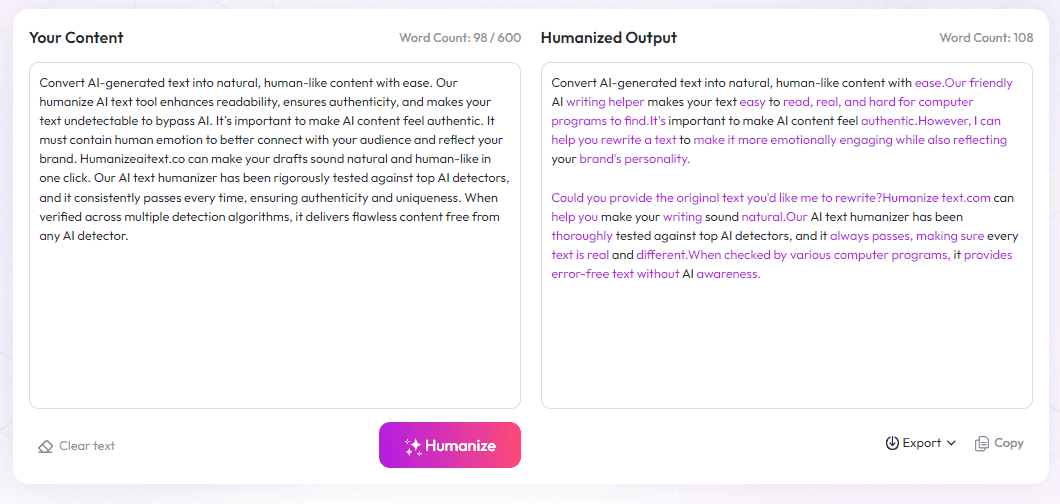Table of Contents
I know many people find feedback forms for book launches a bit of a chore—yet they're super helpful for learning what your audience really thinks. If you're tired of guessing whether your launch hit the mark, keep reading. I’ll show you simple ways to use feedback forms that actually give you useful pointers to make your next launch even better.
By the time you're done, you'll see how asking the right questions and sharing your forms the smart way can make a real difference. I'll also give you templates and tips for customizing them, plus advice on what to do with the feedback you get. Want your next book launch to be a hit? Let's get started.
Key Takeaways
Key Takeaways
- Feedback forms are vital tools to understand what readers liked or didn’t about your book, helping you improve future launches.
- Choose simple platforms like Google Forms or Typeform to create and share surveys easily and reach a wide audience.
- Ask specific questions about story elements, cover design, and overall experience to gather useful insights.
- Distribute your forms through email, social media, and your website, then analyze responses for common themes to guide your next steps.
- Use feedback to refine covers, stories, and marketing strategies, increasing your chances of success in a competitive market.
- Avoid vague questions and narrow feedback audiences; listen to both positive and negative comments for balanced growth.
- Respond to reader feedback to build loyalty, making readers feel valued and more likely to promote your work.
- Leverage feedback in your marketing by sharing positive reviews, updating cover designs, and targeting the right platforms.
- Make collecting reader input an ongoing habit for continuous improvement and staying connected with your audience.

If you want your book launch to hit the ground running, collecting feedback from your readers can be a game-changer. Feedback forms aren’t just about gathering praise or criticism—they’re powerful tools that help you understand what resonates with your audience, spot areas for improvement, and boost your chances of future success. In fact, companies that use feedback-driven development see a 23% higher success rate for new product launches, and nearly 67% of failed launches could have been avoided with better customer input.
Think of feedback forms as your personal GPS during the book launch journey. They tell you where readers are excited, where they get lost, and what you might want to tweak before your next big move. For authors, this means adjusting cover designs, refining the storyline, or even modernizing marketing strategies to better connect with your target audience.
To start, crafting a feedback form that truly delivers results involves a few key steps:
- Select the right platform: Easy-to-use tools like Google Forms, Typeform, or SurveyMonkey offer simple options to create professional-looking surveys.
- Ask relevant questions: Focus on aspects like the story's engagement, cover design, readability, and overall experience. For example, "What did you enjoy most about this book?" or "Was there anything confusing or unappealing?"
- Distribute widely: Share your forms through email newsletters, social media, or even your website to reach the widest audience possible.
- Analyze responses: Pay close attention to recurring themes—if multiple readers comment on the cover's lack of appeal or the pacing issues, those are signals for what to improve.
Why bother? Because feedback not only improves your current project but also feeds into your overall author strategy. Did you know that in 2024, over half of Americans read or listened to a book in the past year, and that ebooks are projected to hit nearly $15 billion globally in 2025? These stats highlight the importance of listening to your readers, adapting, and refining your approach.
Additionally, a survey found that 78% of authors actively use social media weekly for marketing—combining social media feedback with formal surveys can give you a well-rounded view of your audience’s preferences. Incorporating questions about what platforms they use most can help tailor your marketing plan, boosting your chances of success.
In the end, what you do with this feedback makes all the difference. A well-crafted survey will give you insights that can guide your next steps—whether it’s tweaking your cover, refining your story, or adjusting your marketing tactics. Remember, in a crowded market where print sales hit 782 million copies in the U.S. alone, understanding your readers better can give you a notable edge.

7. Mistakes to Avoid When Gathering and Using Feedback
Getting feedback is only helpful if you avoid common pitfalls that can skew your results or discourage your readers.
One mistake is asking overly vague or leading questions, which can produce biased or unhelpful responses.
Another is collecting feedback from too narrow an audience—be sure to reach diverse readers to gain a well-rounded view.
Don't ignore negative feedback; instead, see it as a chance to grow and improve your next project.
Also, avoid overanalyzing every comment; look for patterns rather than getting bogged down by isolated opinions.
Remember, timing matters—seek feedback at strategic points during your launch, not just at the end.
Finally, don't forget to thank your readers—they're offering valuable insights, after all.
8. Using Feedback to Build Long-Term Reader Engagement
Feedback isn’t just for tweaking your current book; it’s a goldmine for creating lasting relationships with your readers.
Respond to comments and show appreciation—it makes readers feel heard and encourages ongoing dialogue.
Track recurring themes to understand what your audience truly values, then tailor your future books or marketing efforts accordingly.
Share behind-the-scenes updates or improvements based on feedback, which can turn casual readers into loyal fans.
Use feedback to identify new genres or topics your audience might enjoy, opening fresh avenues for your writing.
Engage your readers through social media by asking for their opinions on upcoming projects or cover designs.
This approach makes your readers feel involved, turning them into ambassadors for your work.
9. Integrating Feedback Into Your Marketing Strategy
Your readers' opinions can also shape how you promote your book, helping you focus marketing efforts on what works.
If feedback indicates that your cover needs a fresh look, consider updating it and promoting the new design to generate buzz.
Use positive comments as testimonials in your marketing materials, like on social media, your website, or Amazon listings.
Are readers sharing how they find your book or where they’re reading it? Leverage this info for targeted ads or themed campaigns.
Learn which platforms your audience prefers—whether Instagram, Facebook, or TikTok—and tailor your outreach there.
Survey responses about genre preferences can help you choose the right keywords and categories for online promotion.
In essence, let readers' feedback be the compass guiding your marketing moves, making your campaigns more authentic and effective.
10. Keeping Feedback Fresh for Future Book Launches
To stay ahead in the crowded book market, make collecting feedback an ongoing habit rather than a one-time event.
After each launch, review your feedback to identify trends that can inform your next project.
Create a feedback database to track comments over time, helping you see what has and hasn't worked historically.
Set up periodic surveys, even for readers of your earlier books, to keep the conversation alive.
Consider using varied methods—emails, social media polls, or even direct messages—to gather fresh insights regularly.
Experiment with different questions or formats to keep the feedback process engaging for your audience.
By staying connected and curious, you'll continually refine your craft and increase your chances of building a loyal reader base.
FAQs
Feedback forms provide direct input from attendees, highlighting what worked and what didn't. This information helps you make data-driven decisions to enhance future launches and better meet your readers' expectations.
Include questions about overall satisfaction, specific aspects of the event, cover and content feedback, and suggestions for improvement. Clear, concise questions lead to more useful insights.
Yes, templates help you create effective feedback forms quickly. They serve as a starting point, which you can customize to fit your specific book launch event and goals.
Share feedback forms through email, social media, or direct links during the event. Make it easy for attendees to access and complete the form on their preferred devices.



